If you enjoy ordering fashion from Asia, converting Asian size to US size can be tricky. Asian sizes are usually smaller than US sizes, which often causes confusion or frustration. This difference exists because sizing standards vary across regions like China, Japan, Korea, and the United States. A medium in Tokyo may feel like a small in New York, and that’s completely normal.
In this guide, we provide easy-to-use conversion charts and clear tips for accurate sizing. Learn how to compare Asian and US sizes so you can shop online with more confidence.
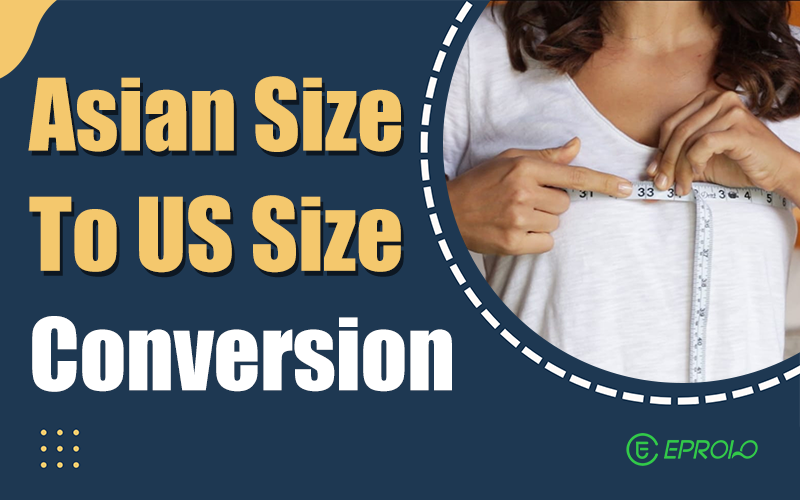
Page overview:
Understand the Differences Between Asian and US Size
Asian Shirt Size to US Size Conversion Charts
1. Women’s Asian Shirt Size to US Size
2. Men’s Asian Shirt Size to US Size
3. Children’s Asian Shirt Size to US Size
Asian Pant Size to US Size Conversion Charts
1. Women’s Asian Pant Size to US Size
2. Men’s Asian Pant Size to US Size
3. Children’s Asian Pant Size to US Size
Asian Shoe Size to US Size Conversion Charts
1. Women’s Asian Shoe Size to US Size
2. Men’s Asian Shoe Size to US Size
3. Children’s Asian Shoe Size to US Size
How to Convert Asian Size to US Size with Accuracy
EPROLO Helps You Handle Asian to US Size Conversions
Why EPROLO Is the Best Choice for Clothing Businesses
Understand the Differences Between Asian and US Size
A commonly encountered challenge for shoppers dealing with global fashion is to convert Asian size to US size. The main thing to remember here is that Asian sizes are much smaller than US sizes — normally one or two complete sizes less. For example, an extra small in the US could turn out to be a small or medium in Asian countries.
This is because Asian sizing caters to smaller frame sizes. So, the measurements of the average body size are likely to differ. Plus, there’s no standardization across Asian countries, so sizing can vary by brand. If you’re sourcing from multiple dropshipping clothing suppliers, this inconsistency can be frustrating for your customers — especially when they can’t try on the clothing before buying.
Therefore, it is crucial to check a brand specific sizing chart and read customer reviews to get the best fit. Generally, it’s safe to err on the side of sizing up, but it doesn’t hurt to double check to prevent mistakes.
The Importance of Size Conversion for Online Store
For online retailers, giving accurate size conversion charts is not only convenient. It’s an important part of offering a seamless shopping experience. Incorrect sizing is one of the leading causes of online return. Customers who don’t get items that fit raise return costs for the business. Streamlining clear Asian sizes to US conversions can significantly reduce returns and improves overall customer satisfaction.
International customers want size conversion tools and info, which help boost your level of trust. Many people are hesitant to buy wholesale clothing from Asia only because you never know if it’s going to fit. However, when stores have reliable conversion charts and detailed measurements, customers can shop with confidence. It also builds a good reputation as positive reviews line up.
Moreover, displaying an accurate Asian size to US comparison helps make your store more accessible around the world. This tells that your brand appreciates and understands your international customers. In increasingly competitive e-commerce, that kind of customer first approach can give a store an edge. In other words, good size conversion just makes sense: it spurs business and adds to real customer satisfaction, and thus to build loyal customers.
Asian Shirt Size to US Size Conversion Charts
Navigating international sizing can be challenging, especially when converting Asian sizes to US sizes for women’s clothing. To assist, we’ve compiled comprehensive charts for women, men, and children, comparing sizes across China, Japan, and South Korea. Before diving into the charts, it’s crucial to understand how to measure key areas accurately.
1. Women’s Asian Shirt Size to US Size
| Asian Size | China | Japan | Korea | US Size |
|---|---|---|---|---|
| S | 160/84A | 9 | 85 | 2-4 |
| M | 165/88A | 11 | 90 | 6-8 |
| L | 170/92A | 13 | 95 | 10-12 |
| XL | 175/96A | 15 | 100 | 14-16 |
2. Men’s Asian Shirt Size to US Size
| Asian Size | China | Japan | Korea | US Size |
|---|---|---|---|---|
| S | 165/88-90 | 36 | 90 | 34-36 |
| M | 170/96-98 | 38 | 95 | 38-40 |
| L | 175/108-110 | 40 | 100 | 42-44 |
| XL | 180/118-122 | 42 | 105 | 46-48 |
3. Children’s Asian Shirt Size to US Size
| Asian Size | China | Japan | Korea | US Size (Age) |
|---|---|---|---|---|
| 60 | 60 cm | 60 | 60 | 3-6 months |
| 70 | 70 cm | 70 | 70 | 6-12 months |
| 80 | 80 cm | 80 | 80 | 12-18 months |
| 90 | 90 cm | 90 | 90 | 18-24 months |
| 100 | 100 cm | 100 | 100 | 3-4 years |
To get an accurate fit, here’s how to measure each key area:
- Chest/Bust: Measure around the widest part of your chest with the tape parallel to the floor.
- Shoulder Width: Measure from the edge of one shoulder to the other across the back.
- Torso Length: Take measurement from the base of the neck down to the desired point of the shirt.
Asian Pant Size to US Size Conversion Charts
If you want to score well-fitting pants when shopping internationally, learn how to convert Asian size to US size. Below are comprehensive women, men and children chart with guidelines on to how the key areas are to be measured:
1. Women’s Asian Pant Size to US Size
| Asian Size | China | Japan | Korea | US Size |
|---|---|---|---|---|
| S | 160/64A | 7 | 55 | 2-4 |
| M | 165/68A | 9 | 66 | 6-8 |
| L | 170/72A | 11 | 77 | 10-12 |
| XL | 175/76A | 13 | 88 | 14-16 |
2. Men’s Asian Pant Size to US Size
| Asian Size | China | Japan | Korea | US Waist Size |
|---|---|---|---|---|
| S | 165/70A | 70 | 28 | 28-30 |
| M | 170/74A | 76 | 30 | 30-32 |
| L | 175/78A | 82 | 32 | 32-34 |
| XL | 180/82A | 88 | 34 | 34-36 |
3. Children’s Asian Pant Size to US Size
| Asian Size | China | Japan | Korea | US Size (Age) |
|---|---|---|---|---|
| 90 | 90 cm | 90 | 90 | 18-24 months |
| 100 | 100 cm | 100 | 100 | 3-4 years |
| 110 | 110 cm | 110 | 110 | 4-5 years |
| 120 | 120 cm | 120 | 120 | 6-7 years |
| 130 | 130 cm | 130 | 130 | 8-9 years |
Here are how to measure waist, hips, and inseam for accurate fit.
- Waist: Take measurements around the waistline, just above the belly button.
- Hips: Measure around the widest part of your hips, ensuring the tape is level.
- Inseam: Measure from the crotch down to the bottom of the ankle. Alternatively, measure the inseam of a well-fitting pair of pants.
Asian Shoe Size to US Size Conversion Charts
International footwear encompasses a wide range of sizes. This means that when shopping shoes overseas, conversion from Asian sizes to US sizes is critical for a comfortable fit. In addition to conversion charts for women, men, and children, here are some tips on how to accurately measure foot length:
1. Women’s Asian Shoe Size to US Size
| Foot Length (cm) | China | Japan | Korea | US Size |
|---|---|---|---|---|
| 22.0 | 35 | 22.0 | 220 | 5 |
| 22.5 | 36 | 22.5 | 225 | 5.5 |
| 23.0 | 37 | 23.0 | 230 | 6 |
| 23.5 | 38 | 23.5 | 235 | 6.5 |
| 24.0 | 39 | 24.0 | 240 | 7 |
| 24.5 | 40 | 24.5 | 245 | 7.5 |
| 25.0 | 41 | 25.0 | 250 | 8 |
| 25.5 | 42 | 25.5 | 255 | 8.5 |
| 26.0 | 43 | 26.0 | 260 | 9 |
2. Men’s Asian Shoe Size to US Size
| Foot Length (cm) | China | Japan | Korea | US Size |
|---|---|---|---|---|
| 24.5 | 39 | 24.5 | 245 | 6.5 |
| 25.0 | 40 | 25.0 | 250 | 7 |
| 25.5 | 41 | 25.5 | 255 | 7.5 |
| 26.0 | 42 | 26.0 | 260 | 8 |
| 26.5 | 43 | 26.5 | 265 | 8.5 |
| 27.0 | 44 | 27.0 | 270 | 9 |
| 27.5 | 45 | 27.5 | 275 | 9.5 |
| 28.0 | 46 | 28.0 | 280 | 10 |
| 28.5 | 47 | 28.5 | 285 | 10.5 |
| 29.0 | 48 | 29.0 | 290 | 11 |
3. Children’s Asian Shoe Size to US Size
| Foot Length (cm) | China | Japan | Korea | US Size |
|---|---|---|---|---|
| 12.0 | 20 | 12.0 | 120 | 5C |
| 13.0 | 21 | 13.0 | 130 | 6C |
| 14.0 | 22 | 14.0 | 140 | 7C |
| 15.0 | 23 | 15.0 | 150 | 8C |
| 16.0 | 24 | 16.0 | 160 | 9C |
| 17.0 | 25 | 17.0 | 170 | 10C |
| 18.0 | 26 | 18.0 | 180 | 11C |
| 19.0 | 27 | 19.0 | 190 | 12C |
| 20.0 | 28 | 20.0 | 200 | 13C |
Note: These charts serve as general guidelines. Always refer to specific brand sizing charts and consider the shoe’s design and intended use when making a purchase.
Here are hot o measure foot length for accurate fit:
- Place a paper sheet against a wall.
- Stand on the paper in a way that your heels touch the wall.
- Mark the tip of your longest toe on the paper.
- Measure the distance from the wall to the mark in centimeters.
- Repeat for the other foot, as sizes may vary.
How to Convert Asian Size to US Size with Accuracy
For any e-commerce business targeting a global audience, the step of understanding how to convert Asian sizes to US sizes is critical. Asian sizing lacks standardization, so a clear approach is needed to ensure customer satisfaction and reduce returns. Here are some strategies for accurate size conversions below:
1. Ask Your Suppliers for Conversion Charts
Start by asking your suppliers — whether you’re working with USA clothing dropshipping suppliers or Asian ones — to send you detailed size conversion charts. Measurements in centimeters and inches should also be included in these charts for the key dimensions: chest, waist, hips, and inseam. With supplier provided data, you know that you’re working with the accurate information for the garments you are selling. This is a foundational step for effectively translating the Asian sizes to US sizes.
2. Always Check Brand-Specific Size Charts
While brands in the same country are usually similar, the sizing can still vary big time. It is always preferable to consult the brand’s size chart instead of only using generic conversion tables. Each of these charts offers exact measurements according to the brand’s specific sizing standards to inform customers and reduce the chances of returns.
3. Create Size Charts for Each Product Type
The sizing needs differ for shirts, pants, and shoes other items. This makes it important to develop individual size charts for each product type. Your size charts must be tailored to specific products to better fit the items and ensure your customers can select the correct size with clarity.
4. Factor in Fabric Stretch and Garment Style
The fit of a garment is greatly dependent on its material. For example, spandex is stretchy fabric, which can be more flexible. On the contrary, you need fine-tuned sizing for hard materials like denim. You should also think over the style of the garment (slim-fit, regular, or oversized) in regards to how clothing will drape on the body. Fabric and style information helps customers get a sense of fit and choose sizes.
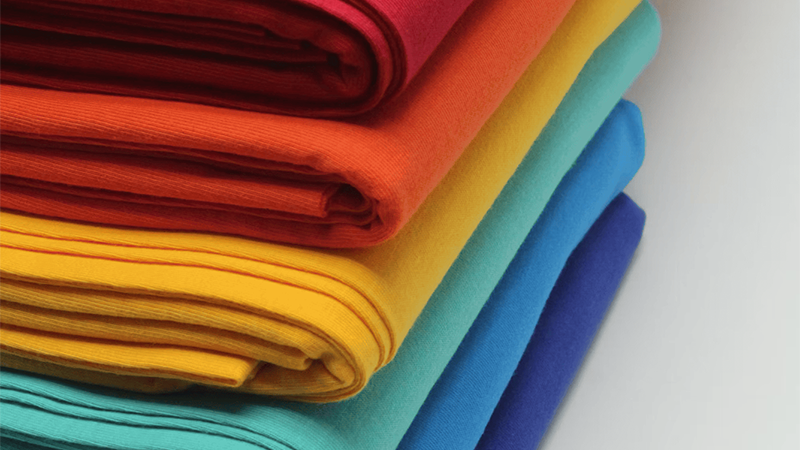
6. Encourage Customers to Take Their Own Measurements
Encourage your customers to measure their size accurately by giving them straightforward instructions. Go the extra mile by providing detailed guides or videos demonstrating how to measure areas such as chest, waist, hips, and inseam. Self-measurement on customers’ part guarantees correct comparison with your size charts and the better fit selection.
5. Include Customer Reviews About Sizing
Customer reviews are a useful way to get an idea of how a garment will fit in your specific real world scenario. Ask your buyers to share their measurements, sizes they bought, and fit & comfort feedback. Such user generated content can double as practical reference for potential customers.
7. Consider Using a Size Calculator or Recommendation Tools
Provide size calculators or recommendation tools like MP Size Chart & Size Guide for customers on your website. These tools take measurements supplied by the customer and will recommend the correct size based on the specifications of your product. Such technology implements enhanced the shopping experience through personalized size recommendations, decreasing uncertainty and potential returns.
8. Don’t Overlook Supplier’s Return Policies
Make sure you know your supplier’s return and exchange policies. Also ensure that these policies are clearly communicated to your customers. Remember, customers trust transparent return policies!
EPROLO Helps You Handle Asian to US Size Conversions
EPROLO makes the process of converting Asian sizes to US sizes as easy as possible. Detailed, supplier sourced sizing information is one of EPROLO’s hallmarks. It includes measurement of chest, waist, and length measurements, allowing your customers to make good purchase decisions.
If you use Shopify, EPROLO has built-in integration for adding size charts to product pages. With this integration, customers can check sizing information easily, reducing returns from wrong sizes.
On top of that, EPROLO’s responsive support team helps with sizing inquiries or any needed clarifications for sellers and buyers. This helps maintain customer trust and satisfaction throughout the buying journey. Choose EPROLO to simplify online shopping for global customers.
Why EPROLO Is the Best Choice for Clothing Businesses
EPROLO is the perfect partner for clothing businesses, supporting them fully in the clothing and accessories niche.They provide detailed product specs, so you can manage and sell fashion items easily. Customers get clear info on sizes, descriptions, and materials.

There is also no membership fee for using EPROLO. Like Amazon or eBay, you can sell without any upfront investment. This makes it ideal for starting a apparel business with zero cost. Plus, EPROLO runs global warehouses and therefore ships faster across different countries. Your customers can receive quick delivery of their orders and have a better shopping experience.
Branding options is another reason EPROLO is a top choice. Your products can have your own brand logo, custom packaging, and personalized touches. What’s more, EPROLO allows you to opt between working with the fashion dropshipping or wholesale option. Sell on demand with lower risk or buy in bulk for better margins. EPROLO gives you the support and tools to grow your fashion business.
To further boost buyer confidence, EPROLO is introducing a 7 day no questions-asked return policy. Whether it’s due to damage, sizing issues, or simply a change of mind, customers can return products freely. This lets them shop without worry. The policy not only boosts customers’ confidence but also allows sellers to test products risk-free before committing to bulk orders.
Best-Selling Apparel Products with US Sizing on EPROLO
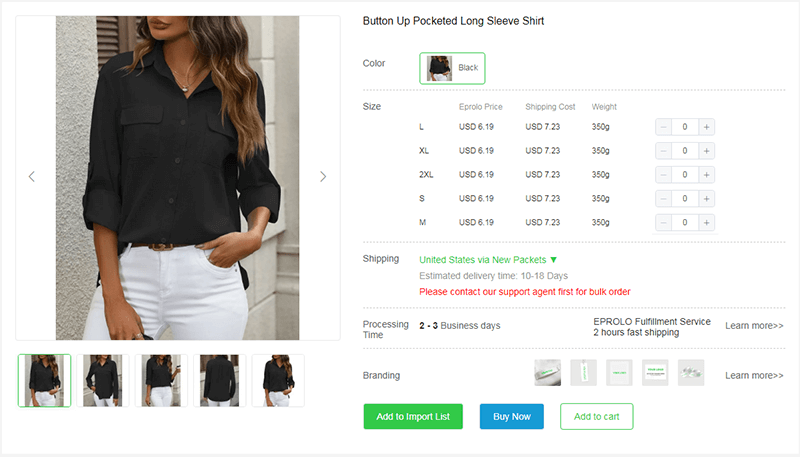
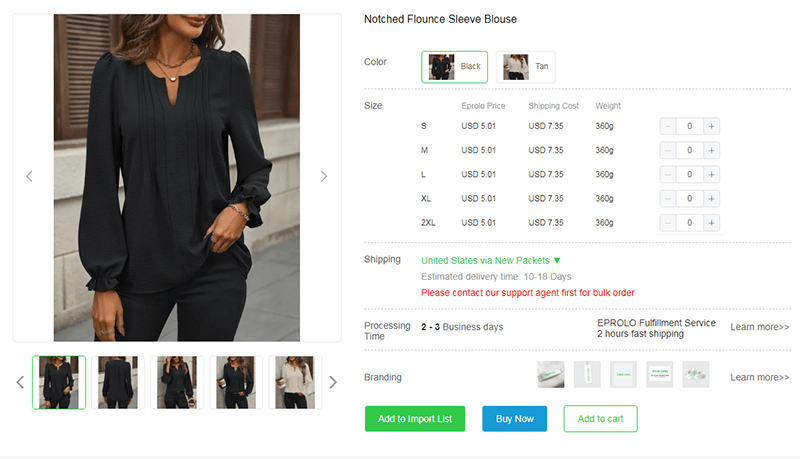
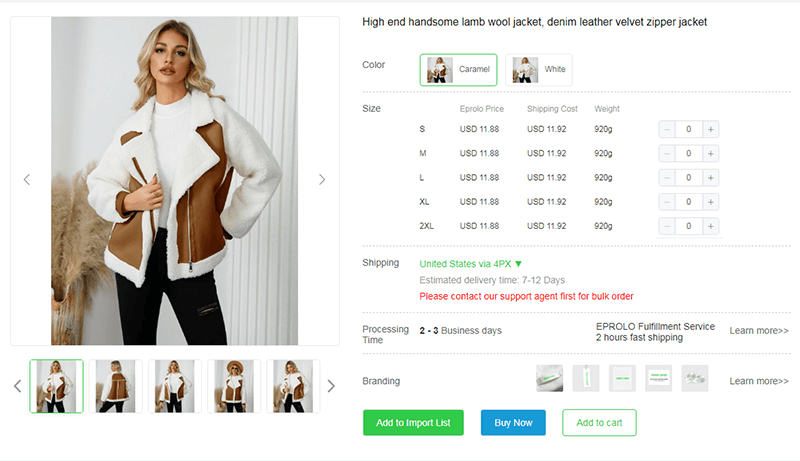
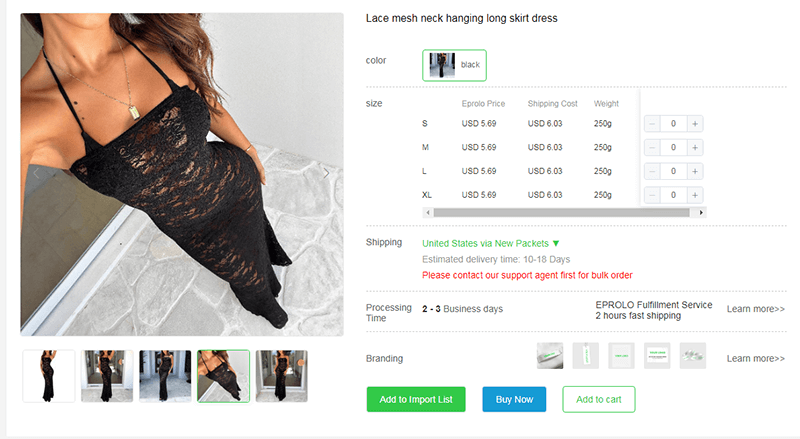
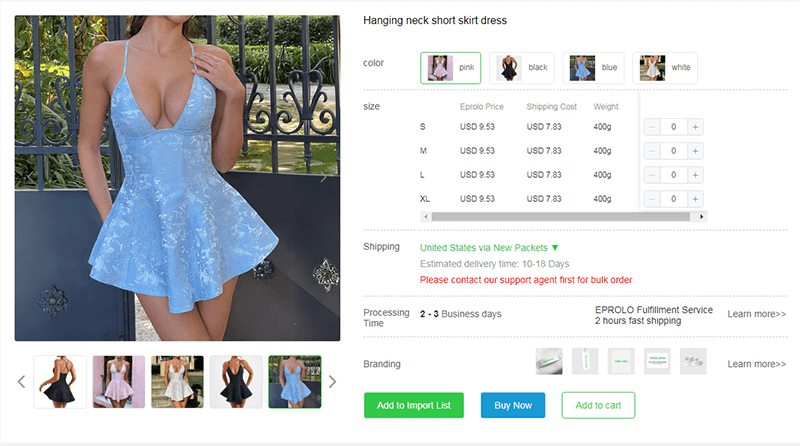
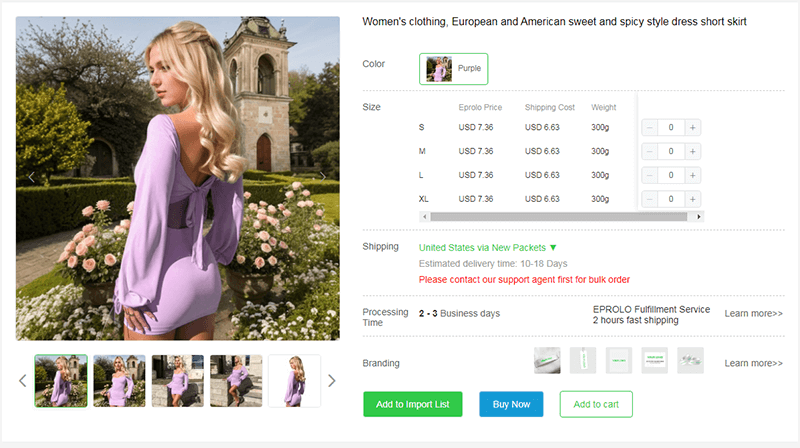
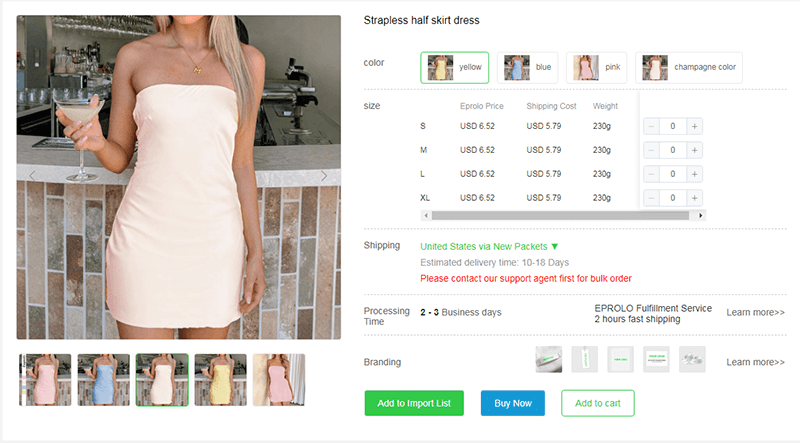
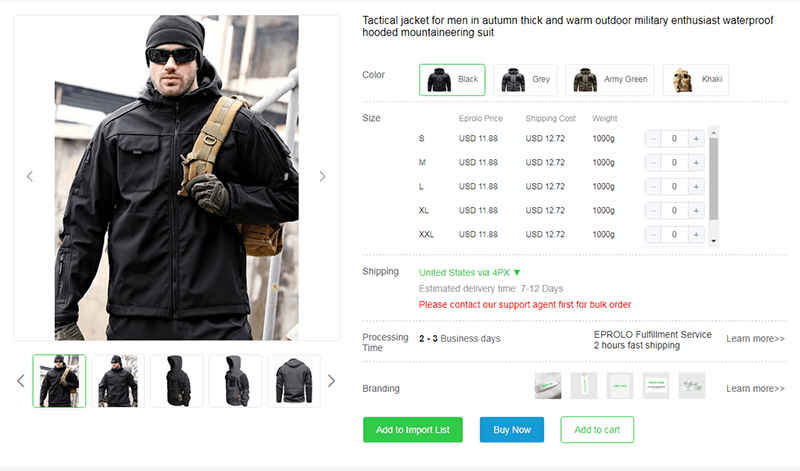
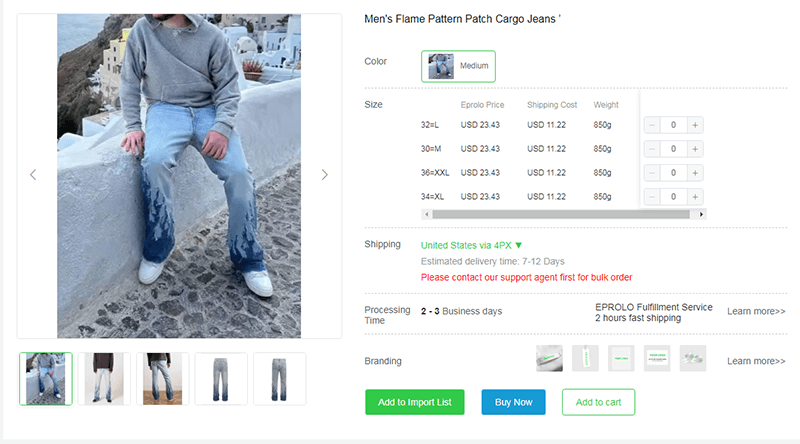
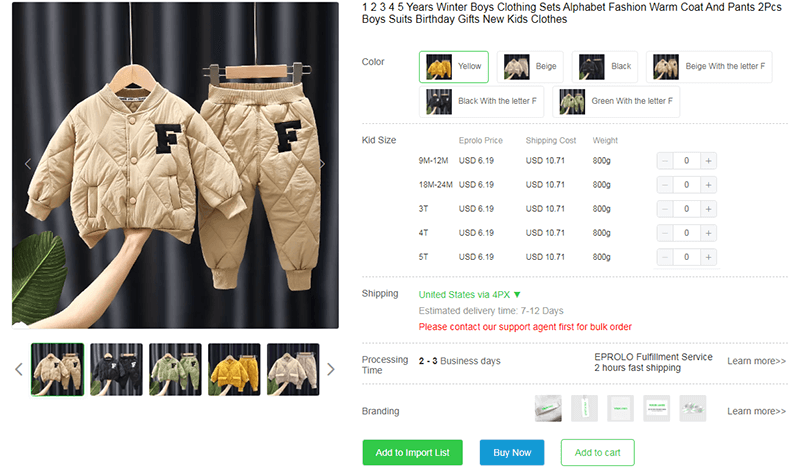
Converting Asian Size to US Size: FAQs
1. What is Asian size XL in the US?
An Asian size XL roughly equals a US size Large (L) but may vary between the brands or countries. In general, Asian sizes are smaller than US sizes.
2. How to convert Asian sizes to US standard size?
To get the right size, it’s advised to size up by 1-2 sizes. For example, think a US size Medium would be the equivalent of a Large on many Asian sizing charts, but it depends on the brand and where the garments are made.
3. How do Asian sizes convert to US sizes?
Converting Asian sizes to US sizes involves understanding that Asian sizes usually run smaller. It’s recommended to size up by 1-2 sizes. For example, a US size Medium may equate to a Large in many Asian sizing charts.
4. How to calculate Asian sizes?
To figure out Asian sizes, measure your chest, waist, hips, and inseam. Match these to the Asian size chart on the manufacturer’s website. Sizes vary by region, like China, Japan, and Korea. Always use the correct chart to convert them accurately.
5. Why Asian clothing sizes are typically smaller than US sizes?
Asian clothing sizes are usually smaller due to body type and regional standards. In many Asian countries, people have smaller average body sizes than in the US. This affects the sizing charts used. As a result, Asian sizes often run narrower and shorter than US sizes.







